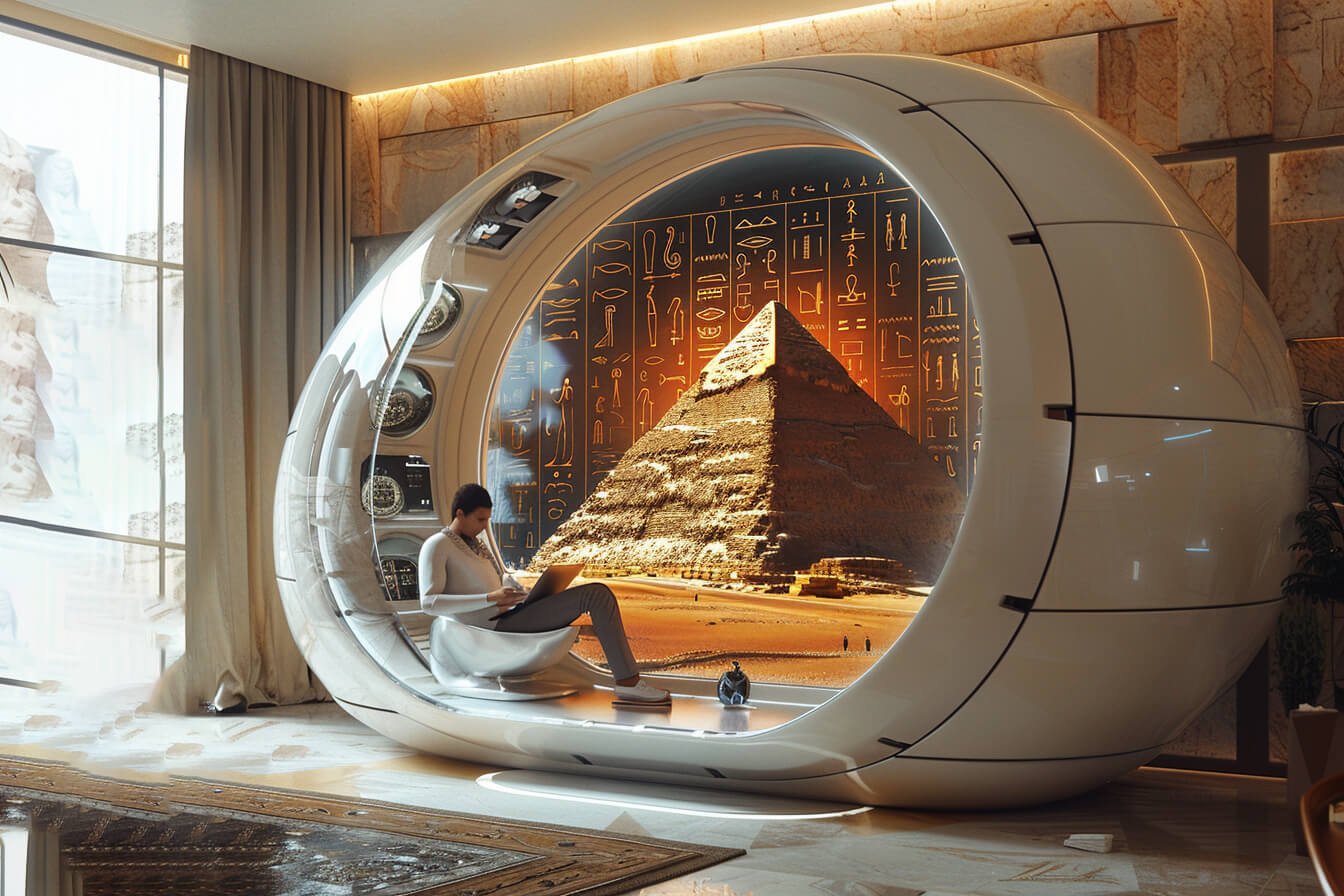The Future of Design for Furniture
Furniture today is static – that is, it does not adapt and change as users’ needs change. Imagine a future where furniture takes its que from car design, where each piece of furniture becomes an interactive and personalized “bubble-space” for its users. How do you think this adaptive furniture will look and feel? And what new opportunities will such furniture design create for humanity? During this launch into the realm of foresight, we will explore the future of design for furniture, the seamless relationship it has with its surrounding architecture, and new possibilities to elevate humanity into our next evolution. Are you ready?
Current Trends: Service Robot Furniture
Already, there are signals pointing to the emergence and propagation of adaptive furniture. For example, today there are prototypes for a service robot chair that uses its “robotic face” to present interactive choices by which its user can request a range of services. (1) Yet, what if this notion of an interactive chair was pushed further? How can a chair, desk, or bed change the future of how people work, heal, and play?
Within hospitals, an adaptive bed could help increase healing time and quality. At home, an adaptive bed could help increase wellbeing, prevent illness, and foster thrivability. How? If an adaptive bed could work together with its surrounding architecture, users could sleep, heal, and relax in ways that nurture best sleeping, healing, and rejuvenation behaviors. For example, what if in a hospital room the adaptive bed could sense a patient is apprehensive and needs to relax? In such a case, it could orchestrate room stimuli to create the best conditions for sleeping with dimmed lights, soft nature sounds, and even adjustments to the mattress.
Service furniture is a worthwhile design concept to pursue, and today furniture is getting closer and closer to achieving this type of functionality. But what about deeper futures?
Future Trajectory: Creating Personalized ‘Bubbles’
How might more truly adaptive furniture look, feel, and function in the future?
Let’s explore more deeply:
The image above depicts a design concept for an adaptive desk. Within this design prototype, you see a science-fiction author working in what I call, their Reflection Pod. This type of adaptive furniture allows its user, the author, to holographically visualize their work. In this case, the science fiction writing calls for extreme imagination, research, and narrative description – and their Reflection Pod is helping the author to achieve all of the latter in real-time, as the writing occurs. Then, if another person works in this Reflection Pod (like a scientist, a doctor, or an artist), the adaptive “bubble-space” adjusts to their needs helping with real-time cosmic 3D-visualizations for the scientist, patient biophysiological 3D-visualization for the doctor, and artistic reference material 3D-visualizations for the artist. This furniture is more than a desk. It is more than a computer. The Reflection Pod becomes the adaptive work environment needed to help a person become not only more productive, but also more creative.
The personalized bubble-space that adaptive furniture creates can be used in a multitude of ways. When applied to the desk, as shown in the above design concept, entirely new ways of working and creating surface. As furniture continues to become more interactive, striving to meet user needs in new ways, it is important to remember:
“The function of design is letting the design function”. – Micha Commeren
To me, a design functions best when it nurtures the very activities it aims to house. This means that a design can become a proactive player in helping its user to actualize their dreams.
For this, the future awaits.
References:
(1) Duong, Amy. (2024) Service Robot Chair Concept. TrendHunter.






